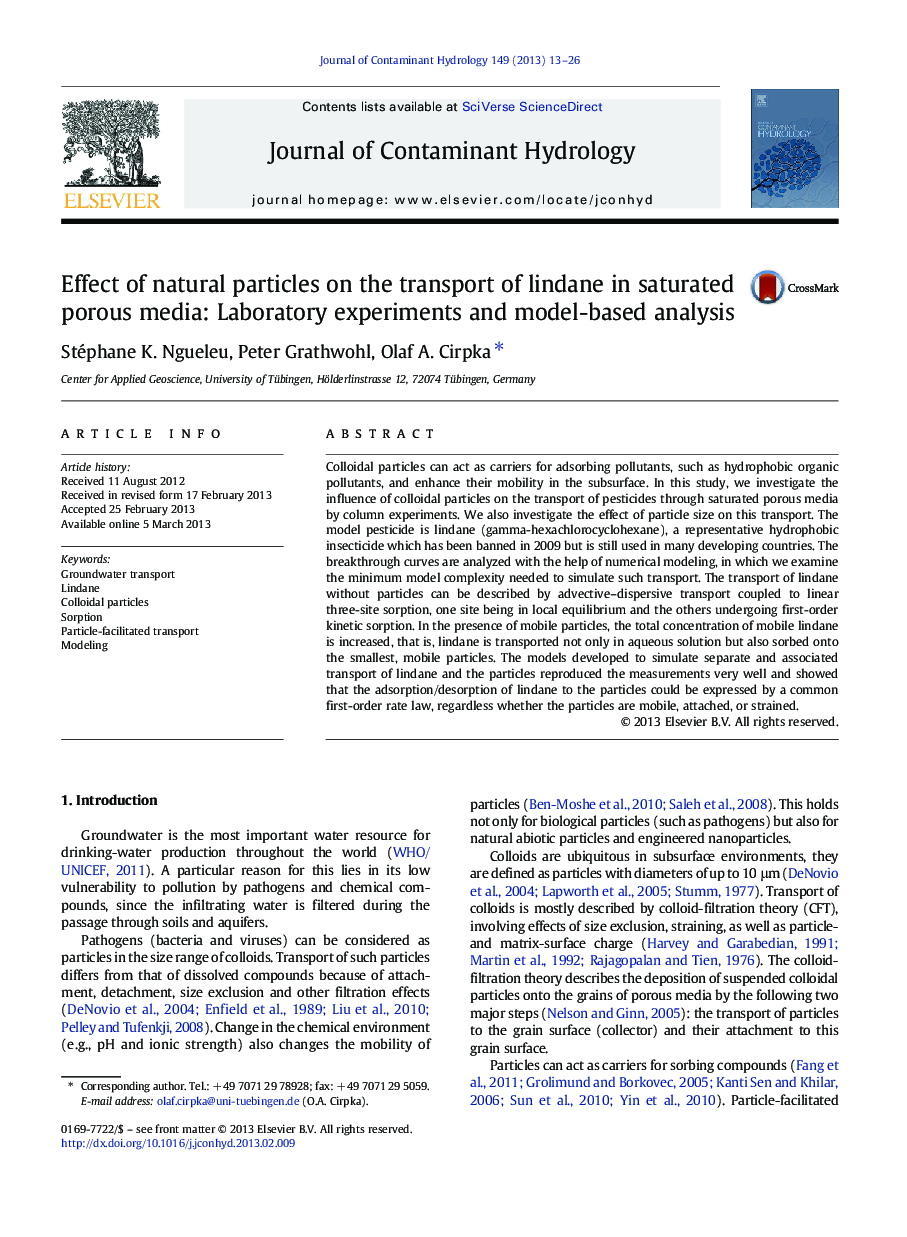| Article ID | Journal | Published Year | Pages | File Type |
|---|---|---|---|---|
| 4546684 | Journal of Contaminant Hydrology | 2013 | 14 Pages |
•Column experiment transport of lindane and lignite particles is quantified.•Particle retention during transport decreases with decreasing particle size.•Lindane transport is controlled by the behavior of the particles.•Smaller-size particles facilitate transport of lindane more effectively than larger-size particles.•The models developed reproduce the measurements very well.
Colloidal particles can act as carriers for adsorbing pollutants, such as hydrophobic organic pollutants, and enhance their mobility in the subsurface. In this study, we investigate the influence of colloidal particles on the transport of pesticides through saturated porous media by column experiments. We also investigate the effect of particle size on this transport. The model pesticide is lindane (gamma-hexachlorocyclohexane), a representative hydrophobic insecticide which has been banned in 2009 but is still used in many developing countries. The breakthrough curves are analyzed with the help of numerical modeling, in which we examine the minimum model complexity needed to simulate such transport. The transport of lindane without particles can be described by advective–dispersive transport coupled to linear three-site sorption, one site being in local equilibrium and the others undergoing first-order kinetic sorption. In the presence of mobile particles, the total concentration of mobile lindane is increased, that is, lindane is transported not only in aqueous solution but also sorbed onto the smallest, mobile particles. The models developed to simulate separate and associated transport of lindane and the particles reproduced the measurements very well and showed that the adsorption/desorption of lindane to the particles could be expressed by a common first-order rate law, regardless whether the particles are mobile, attached, or strained.
